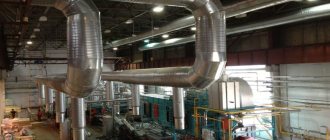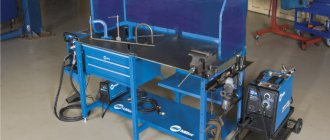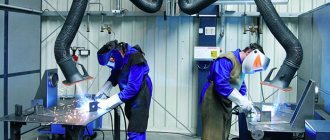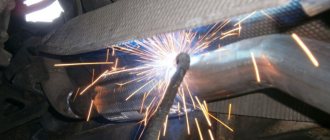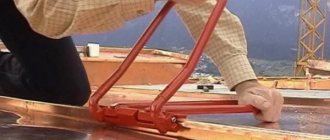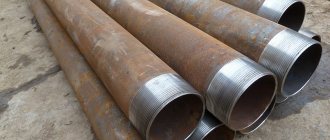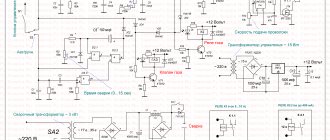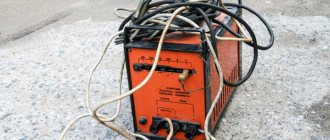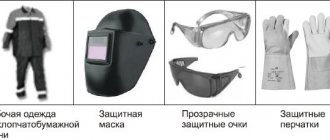Many car owners use a garage to protect their car from theft and adverse weather conditions. However, in the absence of good ventilation, extremely unfavorable conditions are created for the machine in the form of high humidity, which causes metal corrosion. We should not forget that for humans there is a danger of poisoning from gasoline vapors or other derivatives of the engine. This article will look at how to make ventilation in a garage with your own hands.
Air exchange classes in the garage
It should be noted that ventilation of a garage box with and without a basement is practically no different from each other.
Do-it-yourself ventilation in the garage can be made according to the following schemes:
- natural. Is the simplest of all. Air exchange in the room is carried out due to the difference in temperature in the room and outside;
- mechanical (forced). The system is expensive, but the most effective. Air exchange occurs due to equipment that supplies and removes air;
- combined. It works similarly to natural, differing by adding a fan to the circuit to remove air from the room.
Is it possible to leave a garage without a hood?
Some car enthusiasts, unfortunately, do not pay due attention to the ventilation system. And they believe that it is quite possible to do without it; there is no need for an exhaust hood in the garage, especially if the room is well heated and has decent waterproofing.
- In fact, it is necessary to install an effective exhaust hood in the garage and take care of the uninterrupted operation of the ventilation system as a whole. We will indicate only the most significant factors.
- When a car is left in a garage for a long time, the likelihood of metal corrosion is high. Only ventilation will help to eliminate all excess moisture in a timely manner, especially in winter.
- If it is raining outside, the humidity level is simply high, or it is cold enough there, which is why there is a strong temperature difference between the outside and inside the garage, the car ends up wet. It is extremely difficult to wipe everything perfectly. When ventilation works well, moisture evaporates on its own.
- Of course, flammable materials and items that can cause toxic fumes are stored in the garage. In addition, garage workers can paint their cars and carry out repair work. And here you simply cannot do without a good hood to ensure safety and comfort.
The conclusion is clear: a garage hood is necessary.
SNiP and ventilation
For non-residential premises, ventilation standards also strictly regulate air circulation.
Building codes provide for the provision of air to a garage space in the amount of 180 liters per hour.
The circulation of air masses must be organized constantly. Let us note that in Western countries this figure is and should be twice as high.
If we talk about the materials from which the room is built, ventilation in a metal garage will be no different from ventilation in a brick or concrete garage.
Natural air exchange installation
Due to its ease of installation and low cost, such ventilation is suitable for many. It is also commonly used for cellars.
Installing ventilation in a garage necessarily begins with calculations.
According to SNiP, for every 10 square meters of area there should be 15 centimeters of air duct diameter.
For example, the size of a garage is 5 by 4 meters. The garage area will be twenty square meters. We calculate according to the formula: 20 * 1.5 = 30 centimeters.
As a result, we obtain a channel diameter of 30 centimeters. If you plan to install two hoods and two supply channels, this value should be halved.
The figure shows the ventilation in the garage with your own hands, the diagram shows the location of the ventilation openings.
The next stage is preparing the opening for air intake. It is done using a hammer drill at a height of about ten centimeters from the floor. Proper ventilation of the garage will occur when the hood is installed in the opposite supply wall, and it is advisable that the hole be made diagonally.
Using a hammer drill we do the same thing, only under the ceiling. This is necessary because the ventilation pipe will be installed above the roof of the room to a height of approximately fifty centimeters.
Next is treating the voids between the wall and the pipe with sealant. For better bonding, you need to choose a sealant that allows you to connect different materials. At the very end of the installation, care must be taken to install protective devices. To prevent rodents and insects from entering your garage, install protective grilles. A small lid or dome will help protect against precipitation.
Thus, installation of ventilation will cost approximately 300 rubles. It is worth considering that natural air exchange is most effective when the outside temperature is less than 10-12 degrees Celsius.
Stationary post
It is an open-top cabin raised above floor level. In such posts, small and medium-sized parts are welded; it is not suitable for large units and metal structures. The cabin is usually made of metal sheets, which are subsequently coated with zinc-containing paints or other coatings that are resistant to high temperatures and infrared radiation (for example, titanium-based white or yellow chromium-lead salt paint, other modern substances).
The floor must be concrete (or screed). PVC coverings, wooden floors on joists and other flammable materials are not allowed. The entrance/exit is covered with a tarpaulin, or metal double-leaf doors with corrugated glass are provided.
Some requirements for a welding booth:
- Sufficient lighting for comfortable work, the presence of light sources that illuminate the post in general and the table on which all manipulations are carried out, in particular.
- The area of the post is at least 3 m2, the height of the metal walls is 1.8 - 2 m, they must be raised above the floor to a height of 20-25 cm; the ceiling height of the room in which the cabin is installed is, accordingly, more than 2 m for free air circulation.
- A table for working in a sitting position should be 50-60 cm high. The table is assembled from metal. It is advisable that a copper sheet be laid on the table cover (including at the point of contact of the ground terminal). The lid itself is made of steel or cast iron up to 2.5 cm thick. The table should have metal drawers for storing tools, fixtures, electrodes, drawings, etc.
- There must be a special hood above the table. If you are creating a post in a garage, you can build an exhaust fan into one of the walls of the garage; in this case, you will need to take care of the presence of an air supply during the winter season. In industrial conditions, a point hood has recently been often installed, the flexible “trunk” of which can be installed directly at the welding site.
Air exchange in the room is at least 40 m 3 /hour according to regulatory documentation. Let us remind you that with insufficient air exchange, toxic elements contained in welding smoke (aerosol) will accumulate in the lungs of welders, which will eventually lead to the occurrence of occupational diseases.
- There should be a rubber mat under your feet.
- All equipment must be grounded (some welders use RCDs).
- The welder's work chair must rotate around its axis for ease of work. The materials from which the chair is made must be heat-resistant and non-conductive. The seat and backrest can be made, for example, of wood.
- For convenient work, you should have a manipulator (or rotator) and a foot pedal at hand, which simplifies its control. The manipulator is used for welding bodies of rotation.
Installation of a combined circuit
This scheme is practically no different from the previous one. In the same way, a hole will be made on one side of the garage at a height of ten centimeters from the floor. The only difference is that there is no need to make an exhaust hole in the opposite wall. Installing the fan allows you to install it anywhere.
Thus, the combined air exchange method is more suitable, as it will work effectively at any time of the year.
As for fans, many of them have minimal power consumption, so when purchasing, you should choose the one that will produce the least amount of noise.
Mechanical air exchange
Forced ventilation in the garage is carried out by installing fans in the air supply and exhaust openings. However, there are other devices that can cope with this task.
Here are just a few of them:
- Heating lamp. Its installation is carried out in the pipe itself. Thanks to it, the air is heated, and as a result the pressure increases;
- Weather vane diffuser. It is attached to a pipe that performs the supply function. Powered by wind pressure;
- Deflector. Unlike a weather vane-diffuser, it is installed on the hood. Better exchange is ensured by air dilution;
- Monoblock. Among hood specialists, it is considered the best option for providing ventilation in the garage. Thanks to this system, the owner has the opportunity to control the entire air exchange process. Air exchange done in this way will be the most effective compared to natural and combined ones. The only negative is the cost of installation, which can reach 240 thousand rubles or more.
However, in some cases, do-it-yourself forced ventilation in a garage can be quite inexpensive. To do this, you need to do the same as for installing natural ventilation: use a hammer drill to make holes in the walls opposite each other diagonally and install pipes in them. Next, a fan is installed at the inlet openings of the air ducts.
This scheme will allow you to regulate air exchange at any time of the year. To prevent the air duct and the garage box itself from freezing in winter, you can install valves or fan speed controllers. And to protect the room from moisture in winter, experts advise covering the inspection hole or cellar.
Ventilation above the painting area
Car enthusiasts often repair and paint cars in the garage. Of course, the dyeing process releases quite a lot of toxic compounds that are potentially hazardous to health. It is important to provide this area with additional hood. At the same time, experts and more forward-thinking garage workers note that the ventilation system above the painting area should also be equipped with filters.
Please note: forced exhaust must be done above the painting area. Natural ventilation in such a dangerous place will not be enough, since its efficiency is quite low. The air must be cleaned of harmful chemical compounds as quickly as possible.
The most successful solution is to install a forced ventilation system with two fans. One fan will enhance the outflow of polluted air, and the other will actively pump in clean air. It is better to install filters on both air ducts, for outflow and inflow.
It is also important to ensure normal conditions for the work itself in the garage. For example, when the body is being painted, any tiny speck that comes from the air instantly stands out on the fresh paint. That is why the floor in the garage must be moistened before work, and the inlet must be reliably protected by a filter. Then particles of litter and dust will not penetrate into the room.
When a hood with a filter is installed correctly, it will prevent harmful toxic fumes from entering the atmosphere. Remember also about the correct location of the air ducts. The exhaust duct is located at the bottom, but the hole for the flow of fresh air is mounted under the ceiling of the garage room. Then harmful vapors will fall down and immediately and quickly be eliminated from the garage.
Air purification in the cellar
As a rule, a garage is used not only for parking a car, but also for storing food. Accordingly, this also provides additional moisture. But even if storage is not carried out, ventilation of the pit must be organized for comfortable work in it.
As experts note, natural ventilation is the best option in the cellar.
Provided there is good air exchange in the room, it is possible to use pipes with a diameter of 10 centimeters.
One of them is installed around ten centimeters from the floor, and the second on the opposite side, ten centimeters from the ceiling. The end of the top pipe is brought out.
It is also worth taking care of the protection of the hood.
In the inspection hole
It is ideal to carry out work directly at the time of installation. Otherwise, you will have to tear down the entire structure and rebuild it.
Ventilation in the inspection pit is carried out by creating an additional channel immediately after leveling the bottom and walls. For this you will need a plastic pipe. Ideally, if it has a cross-sectional diameter of at least 10 cm. It is inserted into a horizontal trench so that the lower end almost touches the bottom, and is brought out through the wall.
As a result, even with a platform placed on top, excellent air circulation is ensured. And this is with a minimal investment of effort and money into the project.
Look at how other garage owners do it.
Functions of the ventilation system of a welding shop
The main tasks of the welding shop ventilation system are:
- eliminating toxic impurities that enter the air during welding work;
- general air purification throughout the room;
- maintaining optimal levels of temperature and humidity in the room.
Important! In accordance with GOST 12.3.003-86, the welder’s workplace must be equipped with a local ventilation system. Also, general ventilation should be used in the workshop.
Filter ventilation unit HANDYCART
An effective solution for creating normal conditions in the workplace can be the use of mobile units such as:
- Caremaster-BGIA;
- Cleanmaster-BGIA;
- bmaster and
- Cartmaster.
The units differ in power and the filters used and can be supplied with one or two exhaust devices. Below is a brief description of them.
Caremaster-BGIA with one exhaust unit This mobile filter unit for welding fumes is BGIA tested with all extraction arms (Ø 150mm). The degree of purification is ³ 98%.
The design of the installation is developed in accordance with the technical fire safety requirements for units that clean welding fumes of class “W3” (high-alloy steel). When used as intended, the unit can be operated indoors using a recirculation circuit, since all requirements for handling hazardous substances are met.
Rugged steel construction with continuous powder coating ensures trouble-free operation with low maintenance even under the most demanding operating conditions.
All large particles are separated in the prefilter. The flow then passes through the surface of a highly efficient dust filter - Schwebstoffilter -, where the remaining dust particles are filtered extremely finely. The lifting mechanism guarantees absolute tightness of the filters and determines the cleaning efficiency.
The air is released through the outlet grille on the rear side of the unit, towards the top. Thus, when located at a distance of 1 m from the installation, no impact is felt.
The unit is equipped with a powerful fan that guarantees high performance even when the filters are saturated.
Technical data Mechanical filter and ventilation unit Caremaster-BGIA
Standard Equipment
- Prefilter with large filter surface area
- Dust filter with cleaning efficiency ³ 98%
- Optical and acoustic monitoring of filter condition
- Lifting mechanism
- Hours counter
- Electrical cable with rotation direction indicator (400 V model)
- Function indicator lamp
Options (BGIA certificate validity)
- Automatic start/stop system
- Backlight kit
- ON/OFF switch (via suction)
Options (termination of BGIA certificate)
- Aluminum fiber prefilter
- Activated carbon filter
Scope of delivery
- Filter-ventilation unit included
- Exhaust arm Ø 150mm or flexible air duct Ø 150mm up to 12m long
- Suction (made of polymer material) with throttle valve
- Electrical cable 5m long
The exhaust arm can be flexible or rigid with an external or internal support mechanism.
Example of using a Caremaster with two exhaust units
Cleanmaster-BGIA filter and ventilation unit
The cleaning efficiency is ³ 98%.
The pocket filter separates all large particles from the air flow. It then passes through the surface of the prefilter to a high-efficiency dust filter, where remaining dust particles are finely filtered.
The ability of the pocket filter to separate all large particles from the air stream greatly extends the life of the high-efficiency filter. Thus, direct and indirect costs are saved.
The lifting mechanism tightly compresses the filters, which forces air flow to pass through the surface of the filters.
The air is released through the outlet grille on the rear side of the unit towards the top. Thus, when located at a distance of 1 m from the installation, no influences are felt.
Rugged steel construction with continuous powder coating ensures trouble-free operation with low maintenance even under the most demanding operating conditions.
The unit is equipped with a particularly powerful fan that creates negative pressure and guarantees high performance even when the filters are saturated.
Technical data Mechanical filter and ventilation unit Cleanmaster-BGIA
bmaster series units - BGIA
The bmaster-BGIA series units are designed for long-term air purification when welding carbon and alloy steels.
The cleanability of the PTFE membrane filter cartridge with its large filter surface area reduces operating costs. The filter cartridge is cleaned from inside the unit, which prevents separated contaminants from returning back to the working area.
Rugged steel construction with continuous powder coating ensures trouble-free operation of the unit with low maintenance, even under the most difficult operating conditions.
The reflective plate serves as a pre-separator for coarse particles. Next, the air flow passes through the filter cartridge, where the remaining dust particles are retained. Once the maintenance door is opened, the filters can be easily cleaned from the clean side using a pneumatic hand sprayer.
The air is released through the outlet grille on the rear side of the unit, towards the top. And when you are at a distance of 1 m from the installation, no impacts are felt.
Technical data Cartridge filter unit bmaster - BGIA
Options
- Dust bag
- Filter cleaning kit (with special nozzle and compressed air hose)
- Automatic start/stop system
- ON/OFF switch (via air inlet)
- Backlight kit
- Optional activated carbon filter kit
Scope of delivery
- Bmaster installation with 2 filter cartridges
- 2 extraction arms O 150mm
- 2 suction units (made of polymer material) with throttle valve
- Electrical cable 5m long
Local ventilation of the welding station
The essence of the local ventilation system is to purify the air directly at the welder’s workplace, since at a distance of already 4 m the air masses in the workshop can meet the required sanitary standards. But directly near the welding machine, chemical combinations harmful to human health accumulate in the air masses, exceeding the norm by more than 10 times.
Types of local ventilation
- Exhaust devices of lift-and-turn type. This ventilation system consists of an air inlet, which is fixed in any position using hinges, a hose with a diameter of 200 mm connecting the air inlet and a centralized exhaust system. This design allows you to eliminate up to 85% of substances harmful to health, since it can be placed in close proximity to the welding machine. Lift-and-swivel hoods contribute to complete air purification at a distance of up to 8 m from the installation site. The most popular lift-and-turn exhaust systems are the Lan and Sprut models.
- Local suction, which are installed at a height of 1.5 m from the workplace. Another option for installing suction units is to install them directly into welding tables. They are connected to the general ventilation of the workshop with special hoses.
To ensure proper air exchange, the welding shop is equipped with forced-air ventilation. The system must provide an influx of fresh air masses of more than 40 m3/hour.
Types and rules of arrangement
There are two ways to arrange a ventilation system in a welding shop: general and local. They are used together, in addition to each other.
The local scheme is capable of eliminating up to 75% of all harmful substances released during work. To eliminate the remaining 25% of harmful substances, a general metabolic system is used.
Several general rules and requirements for setting up the system:
- Dead spots (from which air cannot be removed in any way) should not be allowed to form in the workshop, especially in the corners. Air containing a large amount of harmful substances stagnates in them.
- Supply ducts with fans should be installed at a height of up to 4 meters. Exhaust ducts should be mounted on the opposite wall, and the height of both ducts should be the same.
- The distance from the wall with inflow to the wall with exhaust cannot be more than 100 meters - this is prohibited. At a greater distance, exhaust air will accumulate in the central zone of the room.
- If necessary, a mobile suction unit can be installed in the local exhaust system, which will allow, if necessary, to move the exhaust hood along with the welding equipment.
- The workshop ventilation system must be equipped starting with the installation of a general supply and exhaust system. When its installation is completed, they move on to installing a local ventilation system.
Now let's take a closer look at the design features of these circuits.
Local scheme
The main purpose of the local scheme is to purify the air locally, that is, right at the work site. It is at the site where welding work is carried out that the most harmful substances accumulate. But already 3-4 meters from the workplace the air can be absolutely clean and meet sanitary standards.
Ventilation for welding station
There are two ways to install local ventilation: through local suction or through lift-and-turn exhaust devices.
In the first case, the suction units are mounted at a height of one and a half meters from the welding station. Sometimes they are mounted directly into welding tables, which is also a good option. Ultimately, local suction is connected to the general ventilation of the workshop using special sealed hoses.
The second option is an air intake, which is attached using hinges and a hose (its diameter can reach 200 mm) in any position. The hose connects the air inlet and the centralized air exhaust system.
Typically, due to this design, it is possible to remove up to 85% of various harmful components from the room. Its advantage is the possibility of installation next to welding equipment. In general, a lift-and-swivel hood allows you to effectively purify the air at a distance of up to 8 meters from the welding station.
Ventilation arrangement for a welding shop (video)
General exchange scheme
The general exchange circuit consists of a system of air ducts to which exhaust fans are connected.
The mechanism of operation of the method is as follows: the air flow, passing through the grille, is dissected, after which it rises vertically upward and is distributed throughout the workshop. The speed of passage of air masses in the workshop is 0.1 m/s, which is sufficient in most cases.
Air exchange is ensured by installing fans under the floor. The removal of exhaust air is ensured by installing fans on the roof with a capacity greater than that of the supply fans.
20 minutes of continuous operation of such a system is enough to remove most harmful substances.
Several rules for arranging a general exchange scheme:
- in the case when less than 0.2 g/hour of electrodes is consumed per 1 m³ of workshop, installation of a general ventilation system may not be necessary;
- the supply speed of fresh air masses should not exceed 0.9 m/s;
- If a local circuit is not additionally installed, then mechanical ventilation should ensure that 2/3 of the air is removed from below and 1/3 from above.
If welding work is carried out inside a container, then the air mass flow rate must exceed 0.7 meters/second , at a temperature of at least 20 degrees inside.
Click “Like” and receive only the best posts on Facebook ↓
Regulatory mechanism for local ventilation
According to sanitary standards N 1009-73, a number of requirements are put forward for the device of local ventilation:
- local suction must be installed at stationary and non-stationary welding stations;
- when manual welding, the workplace must be supplemented with rotary-lifting panels, the bottom of which should be no higher than 350 mm from the welding machine;
- when welding medium-sized products, it is necessary to install a fume hood, which is a type of local suction;
- the air speed when using manual welding and a device powered by carbon dioxide must be more than 0.5 m/s and 0.3 m/s when welding in inert gases;
- fume hoods must localize up to 90% of harmful substances from air masses, other types of local ventilation - up to 75%;
- 10-25% of harmful components in the air must be eliminated using a general ventilation system.
When is general ventilation needed for a welding station?
In accordance with SNiP2-33-75, the ventilation system of the welding shop must be of the mechanical type, that is, equipped with special fans. The supply of fresh air should be carried out by air distributors installed at a distance of 6 m from the floor when supplying the flow downwards in a vertical position or at a distance of 4 m when supplying the flow in a horizontal position. You should also take into account the speed of air mass flow, which cannot be less than 0.1 m/s.
When installing ventilation with parallel flows, the most optimal conditions for performing work and purifying air are created, since exhaust air masses containing harmful gases and aerosols move in the same direction as the supplied air. The mass of the supplied flows must be less than the amount of polluted air removed. This principle can significantly increase the efficiency of the system.
Ventilation requirements for welding rooms
Welding work is a hazardous process because a large number of substances are released: aerosols of iron oxides, oxides of chromium, manganese, fluoride compounds, silicon dioxide.
They pose a significant danger to human health and harm the environment, therefore all premises intended for permanent welding work (shops, posts, areas) are equipped with ventilation.
Problems solved by welding station ventilation:
- Removal of harmful substances.
- Maintaining the indoor microclimate in terms of temperature, humidity, concentration of substances in full compliance with the established requirements of GOST and SNiP.
- Constant supply of fresh oxygen.
The air exchange of the welding room must be autonomous. If the workshop is located in a building with other rooms, ventilation should not be shared. It is prohibited to design systems with repeated and cyclic use of air masses. Before being supplied to the workspace, the air is brought to the required temperature, depending on the indicators outdoors and indoors.
Scheme of general ventilation of the welding shop
The ventilation grille, the size of which is 23.5x43.5 mm with a hole diameter of 50 mm, provides fresh air at a speed of 4.5 m/s. Air masses, dissecting as they pass through the grille, rise vertically and cover the entire room. The speed of air movement in the workshop corresponds to 0.1 m/s, which makes it possible to eliminate all harmful components in the air. Air exchange in the room is ensured by fans installed under the floor, with a total capacity of 3400 m3/hour. Exhaust air is eliminated using fans installed on the roof with a total capacity of 6600 m3/hour. When the system operates for 20 minutes, all contaminated air masses are eliminated, and the concentration of harmful substances in the air is reduced to 2 mg/m3.
Materials and tools
For this project you will need the following materials:
- 12V fan
- Fan speed controller
- Power connector
- Key switch size 15×10 mm
- 5mm LED
- 580 ohm resistor
- Wires, 22 AWG
- Heat shrinkable tube
- Cage nuts M3
- Activated carbon filter
- Double-sided adhesive tape
- M3x12 screws
- M5x8 screws
- Rubber feet
Here is a list of necessary tools:
- Soldering iron
- 3D printer
- Wire cutters
- Wire stripping tool
- Hot air gun
Regulating mechanism of general ventilation
- If less than 0.2 g/h of welding materials is consumed per 1 m3 of room, the arrangement of general ventilation may not be carried out.
- The fresh flow rate cannot exceed 0.9 m/s.
- In the absence of a local ventilation system, mechanical ventilation should ensure the elimination of 2/3 of the air masses from below and 1/3 from above.
- If welding work is carried out inside a product (container, barrel), the air speed should be more than 0.7 m/s at temperatures not lower than 20 degrees.
Calculation of a ventilation system for a welding shop
Calculation of the performance of the ventilation system for a welding shop should be carried out depending on the number of electrodes used per 1 working hour:
- manual welding method – for 1 kg of electrodes it is necessary to ensure a productivity of up to 4500 m3/hour;
- semi-automatic welding method - for 1 kg of electrodes it is necessary to ensure a productivity of up to 2 m3/hour.
Important! When working using the semi-automatic method, one worker can use more than 5 kg of electrodes, respectively, productivity increases by a multiple of the material used.
For the ventilation system to be effective, it is necessary to install powerful fans that are fixed outside the workshop. Ventilation ducts are installed using metal pipes. Ventilation grilles should be located near the welder’s workplace.
When installing an exhaust system, it is allowed to install special filters that allow the use of air recirculation in the workshop. There, the emission of harmful welding gases into the atmosphere is eliminated.
The welding shop ventilation system must provide fresh air to the shop and remove stale air. It is designed at the initial stage of construction.
#1 Nail02
Construction portal No. 1
Each professional welder has a workplace - a welding post, which must be organized depending on the type of connecting work, as well as the size of the parts and structures being manufactured . The equipment of the welding station may also differ depending on the type of connecting work and other important elements. The welding station can be stationary or mobile, so we will try to consider both options for arranging the welder’s workplace.
